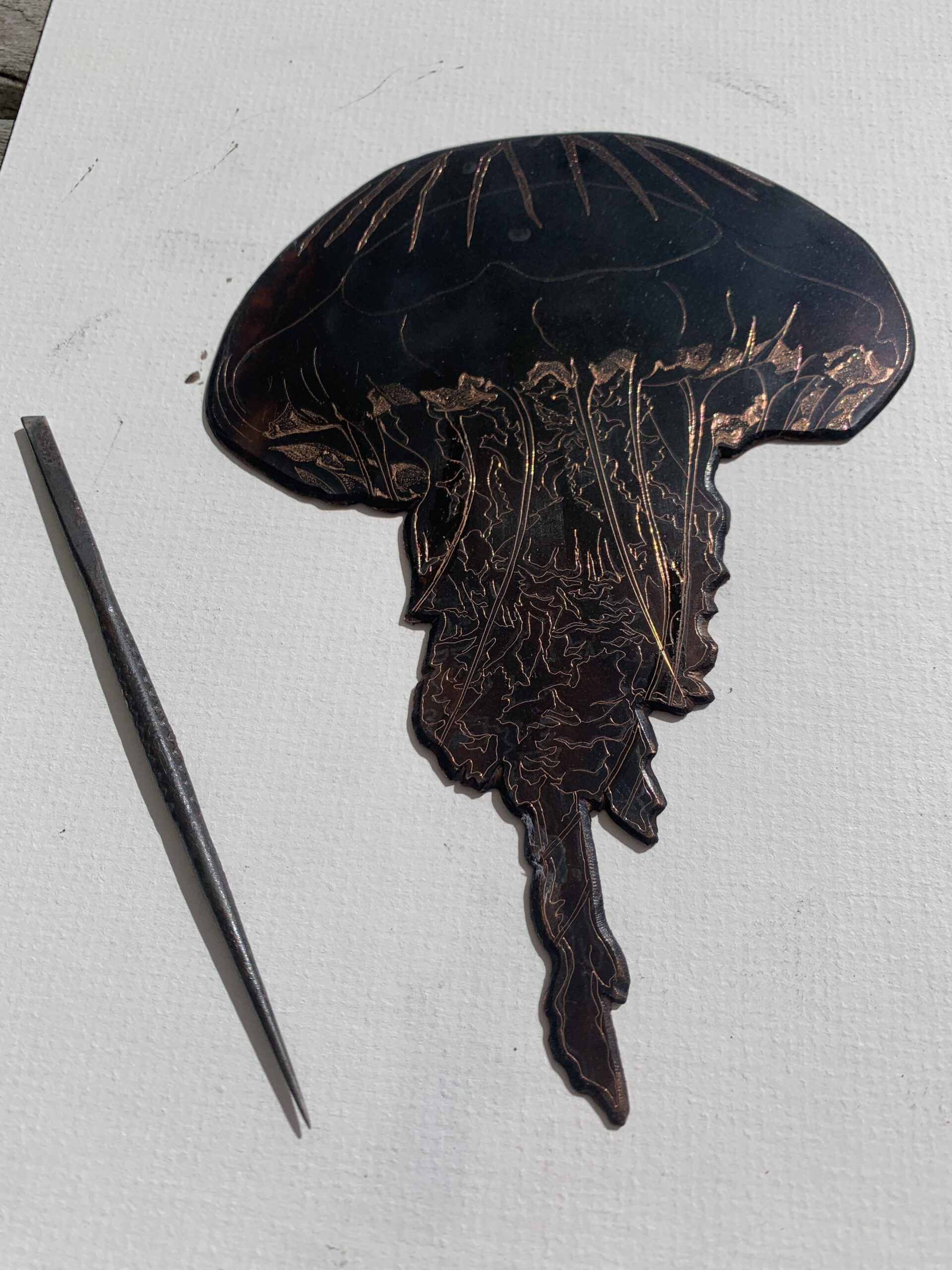The Compass jellyfish is a fairly common visitor to our waters, usually between May and October. Instantly recognizable with distinctive brownish red ‘v’ shaped compass -like markings on its ‘bell’. This is surrounded by a fringe of fine almost transparent tentacles. A clump of oral arms hangs beneath the bell, these frilly appendages contain stinging cells which inject a toxin into fish or other small organisms before moving the captured prey into the creatures mouth.

A Greek Stinging Nettle…
Jellyfish are Cnidarians and members of the class Scyphozoa, from the Greek word for cup- due to its body shape. Cnidaria comes from the Greek word ‘Cnidos’, meaning stinging nettle- a highly appropriate name as the long tentacles can give a nasty if not sometimes fatal sting.
I’ve seen many Compass jellyfish this summer when out in the boat, paddle boarding and snorkelling- I don’t always wear a wetsuit so was careful to keep a safe distance from them as the trailing tentacles are almost invisible.
During a high tide a couple of weeks ago I was feeding the swans that live in the tidal lake by my house and a Compass jellyfish drifted alongside. In perfect calm water I was able to do some drawings before it disappeared out on the tide.
Creating The Plate
From my rough sketches I prepare the etching plate ready to be worked on. The engineers on the Fish Quay at Sutton Harbour cut the copper plate for me. Once the wax ground is laid down, I am able to start drawing and creating the image onto the plate.

No responses yet